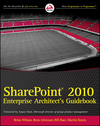(Advanced Relevancy Tuning, FAST Rank Profiles)
Concept of relevancy is important to search as it is a direct result of a sorting order in which results that are most significant as answers to the executed query appear first in the result set. For example when you search for a document and the query finds a match in the title of the document vs. the body, the document with the matching title would be better match as an answer to the query. In SharePoint Search 2010 there is a predefined ranking model which cannot be changed, but you can influence relevancy of documents by defining keywords, best bets, synonyms , search scopes, managed properties and sites promotion and demotion.
FAST Search For SharePoint 2010 search engine comes with a rank model that specifies how the relevancy is being calculated, but as the content within the enterprise varies in format, quality and freshness, there is no one-size-fits all model that can be applied throughout the enterprise and produce the desirable search experience. This is why FAST for SharePoint Search 2010 allows you to define your own relevancy models by introducing rank profiles.
Rank profiles are defining how the relevancy will be calculated on a particular query based on where within the document or item the match to the query occurred. For example: If a query term matches to the description metadata of the document this document most likely to be more relevant then the document with the match only in the body of it.
While SharePoint search comes with a preset rank profile which you cannot modify, Fast Search for SharePoint 2010 allows you to create your own rank profiles and apply them on a per query basis, you can also expose these rank profiles as a sorting criteria to end users.
You can create your own rank profiles through PowerShell cmdlets. http://technet.microsoft.com/en-us/library/ff453904.aspx







No comments:
Post a Comment